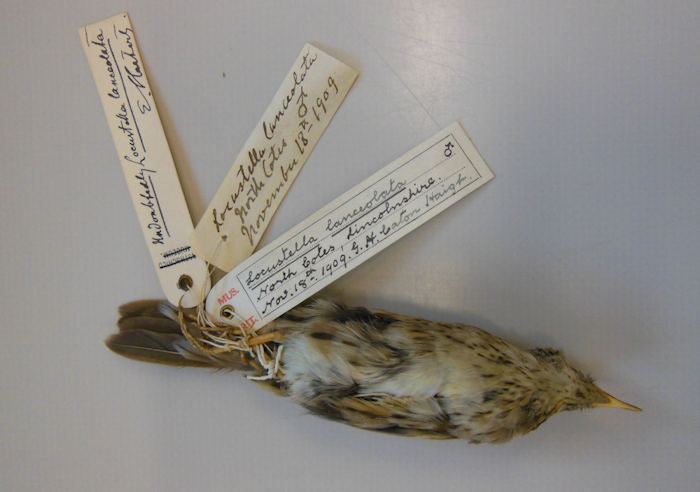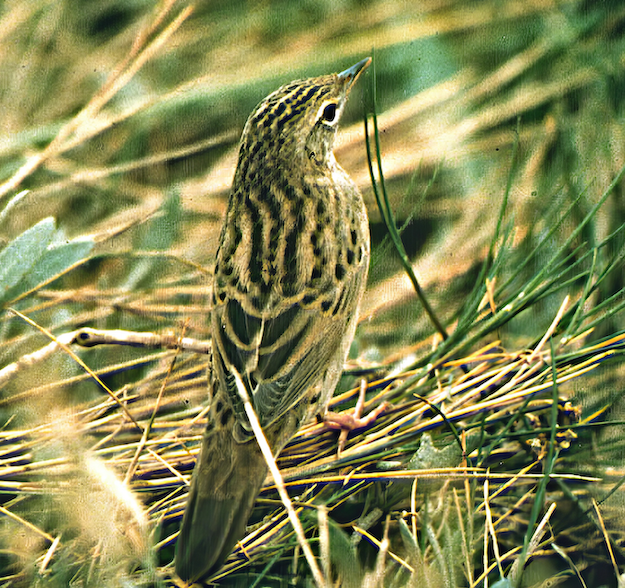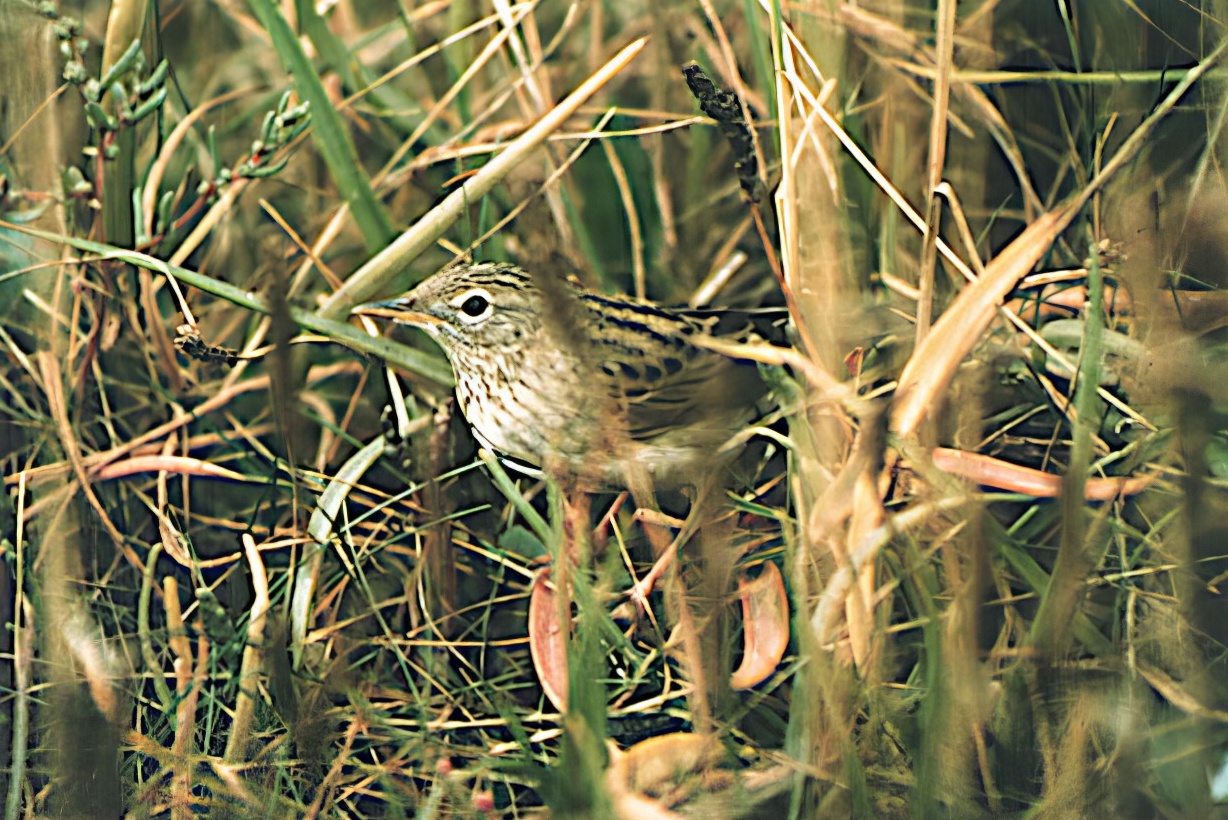Lanceolated Warbler Locustella lanceolata



This Eastern Palaearctic species breeds across the taiga in damp valleys, on lake and marsh edges, open meadows with scattered bushes, damp woodland clearings and forest-edge scrub. It reaches as far west as eastern Finland. Will the next one turn up in a mist net or Heligoland trap on the Lincolnshire coast? Hope springs eternal.
| Site | First date | Second date | Count | Notes |
| North Cotes | 18/11/1909 | - | 1 | Shot |
| Saltfleetby-Theddlethorpe NNR | 22/09/1996 | - | 1 |
Finder's report: Lanceolated Warbler at Rimac, September 22nd, 1996.
by J. R. Clarkson
Note: this account appeared in the Lincolnshire Bird Report for 1996. The BBRC report for that year noted that Lanceolated Warbler had been recorded for the fourth successive year on, or just off, the English east coast and wondered how many more go undetected.
Circumstances and description
At about 4.30pm on the afternoon of Sunday September 22nd, following an uneventful seawatch at Rimac, John Clarkson, Andy Sims and Adrian Royle were walking back to the car park when they flushed a small, dark, grey-looking bird from the saltmarsh. It dived into cover but was soon flushed again and seen to be a small Locustella warbler but, frustratingly, only in flight. After being flushed five times however, the bird obliged by behaving in an increasingly confiding manner, eventually allowing approach to within a few feet as it fed in short vegetation.
As soon as the salient features had been noted – its small size, heavily streaked upperparts, dark-centred tertials with narrow pale fringes, streaking on the throat and breast forming a well-defined gorget, and whitish, finely streaked undertail coverts – JRC ran to inform other birders and pass the message to the bird information lines. By dusk about 30 birders had made it to Rimac to see the bird creeping mouse-like, on the marsh. It was not seen the following day.
This was only the second Lincolnshire record, the first being in 1909* The finders were appropriately astonished, especially AR, for whom it was a lifer, as they were nowhere near Fair Isle or a mist net. This rounded off a fine day for ACS who had found a Little Bunting at Donna Nook in the morning, itself only the fifth county record.
*see photograph of skin, top of page.
Reference
G. H. Caton Haigh (1909). The Lanceolated Warbler, Locustella lanceolata, in Lincolnshire. A new British bird. British Birds 3 (11): 354-355.
(Account as per new Birds of Lincolnshire (2021), included November 2022)

